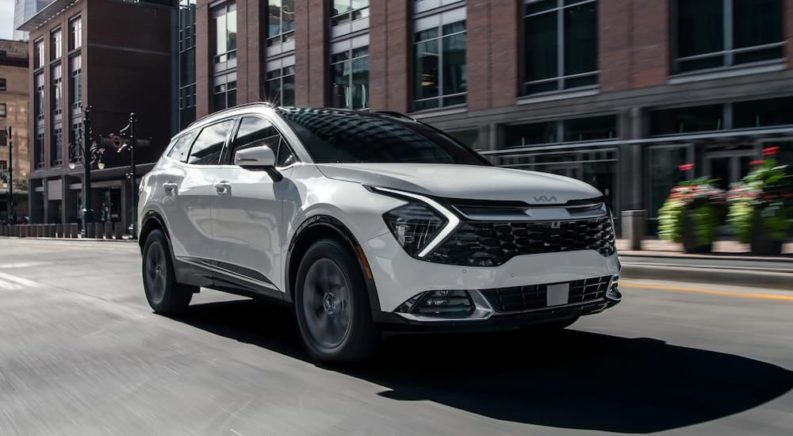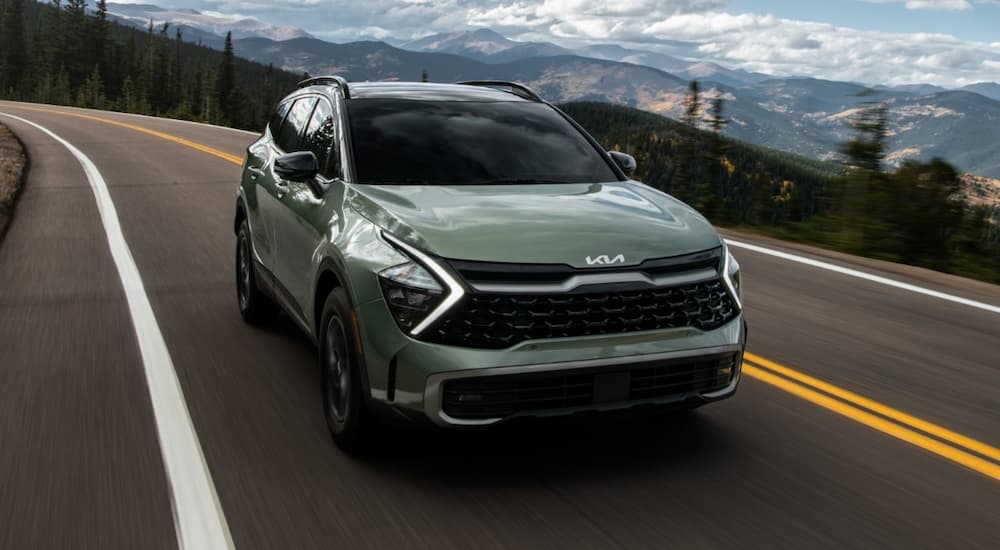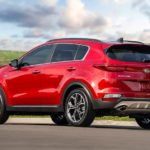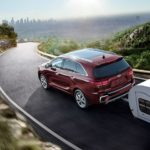With so many makes and models of SUVs on the road today, how do you choose the right one? Do you go with dependability, performance, price, storage, or a manufacturer’s warranty that provides unbelievable peace of mind? What about all the above? If that last option seems improbable, just look at Kia. The dedication and expertise that Kia places into the development of their vehicles are such that you’ll no longer ask what brand of SUV is best for you, but, “Where’s the nearest Kia dealer near me?”
Kia provides consumers with a fleet of vehicles that are not only affordable, but help them maintain a high quality of life. While the options that Kia has to offer are many, today we’re going to focus on one that, over the course of several years, has proven itself as one of the best in the industry. Since 1993, the Kia Sportage has evolved when necessary to stay ahead of the curve—for the betterment of the millions of drivers who depend on them daily.
The Early Days of the Sportage
The early 1990s were a very interesting time period for the SUV. Popularity was dominated by the Ford Explorer and Chevy Blazer, while other vehicles such as the Isuzu Amigo and Toyota 4Runner also racked up sizable numbers in terms of sales. Unlike many of the subcompact designs that are widely popular today, box-like shapes with straight lines were the norm. Speaking of popularity, the SUV was nowhere near the level of admiration that many associate with it today.
It was during this era that the Kia Sportage made its debut as part of the 1993 model year. There was little-to-no indication of the lineage that the vehicle would acquire over time, and the Sportage was what one might expect a 5-door SUV to be like. Equipped with a Mazda 2.0-L 4-cylinder engine that generated 128 horsepower. For those who favored a sportier version of the Sportage, a 3-door model was also available, which was comparable to the Isuzu Amigo—one of the earlier subcompact SUVs available on the market.
While still developing, this first generation of the Sportage was available in the United States from 1995 to 2004. To make the perfect omelet, a few eggs have to be broken. Soon, the Sportage would not only break out of its shell, but break the mold entirely….
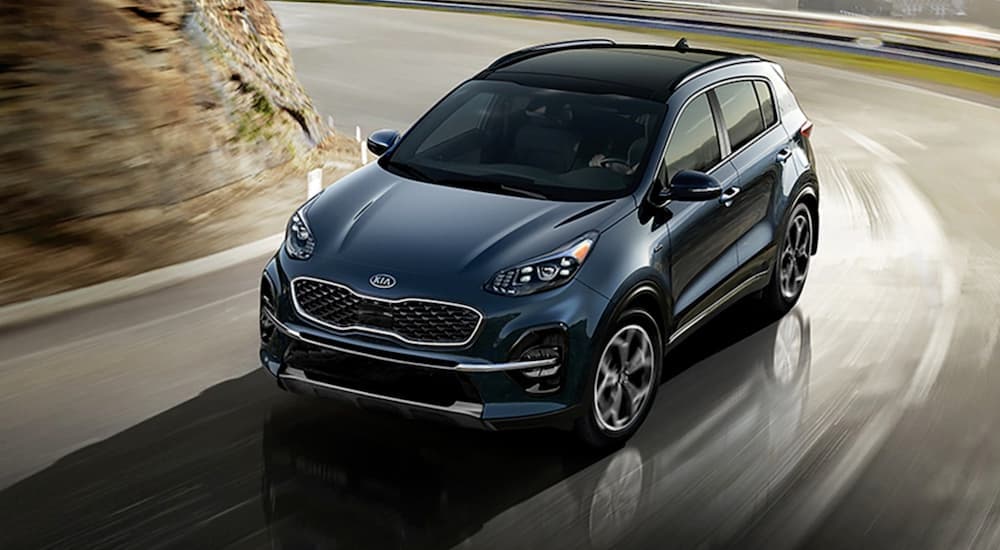
Shattering the Mold and Expectations
The mark of a successful brand is its willingness and capability to change with the times, adapting to the needs and wants of consumers. By the time the second generation of the Kia Sportage began rolling off assembly lines, the rules of the game had changed. The design and appeal of the SUV adjusted to consumer tastes. While the mid-to-late ’90s had been a period of bulky vehicles with monstrous V8 engines, the early 2000s marked a change. Vehicles that were more fuel-efficient, smaller, and even a bit sportier were the new standard—and many manufacturers subsequently attempted to recalibrate their designs.
The 2005 Kia Sportage offered two distinctive powertrains, which offered their own advantages. Models with the efficient 2.0-L 4-cylinder were capable of a combined MPG of 22. For those who required a little more power, Kia now offered up a 2.7-L V6 capable of 172 horsepower and 181 lb-ft of torque—alongside the ability to tow 2,000 lbs.
The most notable change to the Kia Sportage in this new generation was the way it was built. Sharing the same chassis as the Hyundai Elantra, the emphasis on the new Sportage was based firmly on having increased maneuverability. A new, curvaceous body style was visually more appealing to the eye, and a five-star safety rating from the NHTSA offered total peace of mind.
The Diesel Sportage Arrives in North America
One of the most fascinating developments to happen in the past several years is the rebirth of the diesel engine. While these are usually synonymous with large pickup trucks, the Sportage had been utilizing diesel powertrains since the very beginning in various overseas markets. For the Sportage’s third generation, which began with the 2011 model year, a 2.0-L diesel-powered engine premiered in North American models. This powertrain was capable of 184 horsepower and groundbreaking 281 lb-ft of torque.
While gasoline-powered engines were still available, the technology’s implementation in a smaller-sized SUV was impressive. Receiving another five-star safety rating from the NHTSA and chosen as a top safety pick by the IIHS, the Sportage’s third generation was a testament to the manufacturer’s continual pursuit of excellence and dedication to their customers.
Sleek, Seductive, and Something New
Just when Kia fans thought the Sportage had reached near-perfection, the fourth generation that arrived for the 2017 model year broke all the rules. While the sleek and seductive design certainly made critics and consumers take notice, it’s what was underneath the hood that proved Kia’s innovation was just as razor-sharp as ever.
With a capacity of 2,000 lbs, the 2017 Kia Sportage had the best tow rating it had ever reached. But that was only one aspect of the all-new, performance-oriented Sportage. Once again, Kia offered two distinctive powertrains: one built for economy, the other for power. For those who were interested in saving money at the pump, a 2.4-L four-cylinder offered an effective combined MPG of 26. If you were one for putting the pedal to the metal and zipping through traffic, then a turbocharged 2.0-L 4-cylinder provided 237 horsepower and 260 lb-ft of torque—all the while still earning an average combined MPG of 23.
Once again, the NHTSA rated the Kia Sportage with a five-star safety rating. Plus, a redesigned interior placed luxury at the forefront, providing a soothing and relaxing ride for drivers.
A Modern SUV for the Modern Era
When the 5th and current generation of the Kia Sportage arrived on the playing field in 2021, it had stiff competition from brands like Mazda and Honda. Not to be outshone, Kia continued to prove itself as one of the most reliable and versatile SUV brands on the road. Luxurious features such as heated seats, a powered tailgate, and dual-zone climate control were included in their models. Kias immediately became competitive with the higher-end luxury SUV offerings from Mercedes-Benz and Lexus. Across the board, the Kia Sportage in its newest incarnation proved to be a formidable adversary for rivals within the industry.
The average consumer took notice of this pursuit of perfection, as sales in 2021 reached an all-time high. It was another year with a five-star safety rating, but almost as impressive were the various powertrains. Kia showed their devotion to lowering emissions by introducing three different hybrid incarnations of the 2023 Sportage. Gasoline and diesel-powered hybrid versions are now available, as is a plug-in hybrid with an impressive range exceeding 500 miles.
With every box checked, the newest incarnation of the Kia Sportage could suit the wants and needs of every possible driver and consumer. Whether it’s economy, environmental impact, or performance, there’s a Kia Sportage for that.
A Continuous Evolution and Living the Sporting Life
While the Kia Sportage might not have been on your radar when it made its first appearance back in 1993, you certainly know about it now. With each year that passes, the Sportage just keeps getting better and better. Not many manufacturers can lay claim to that assessment. In the years that follow, I only expect that Kia will continue to think outside the box in its consistent evolution and pursuit of perfection.

